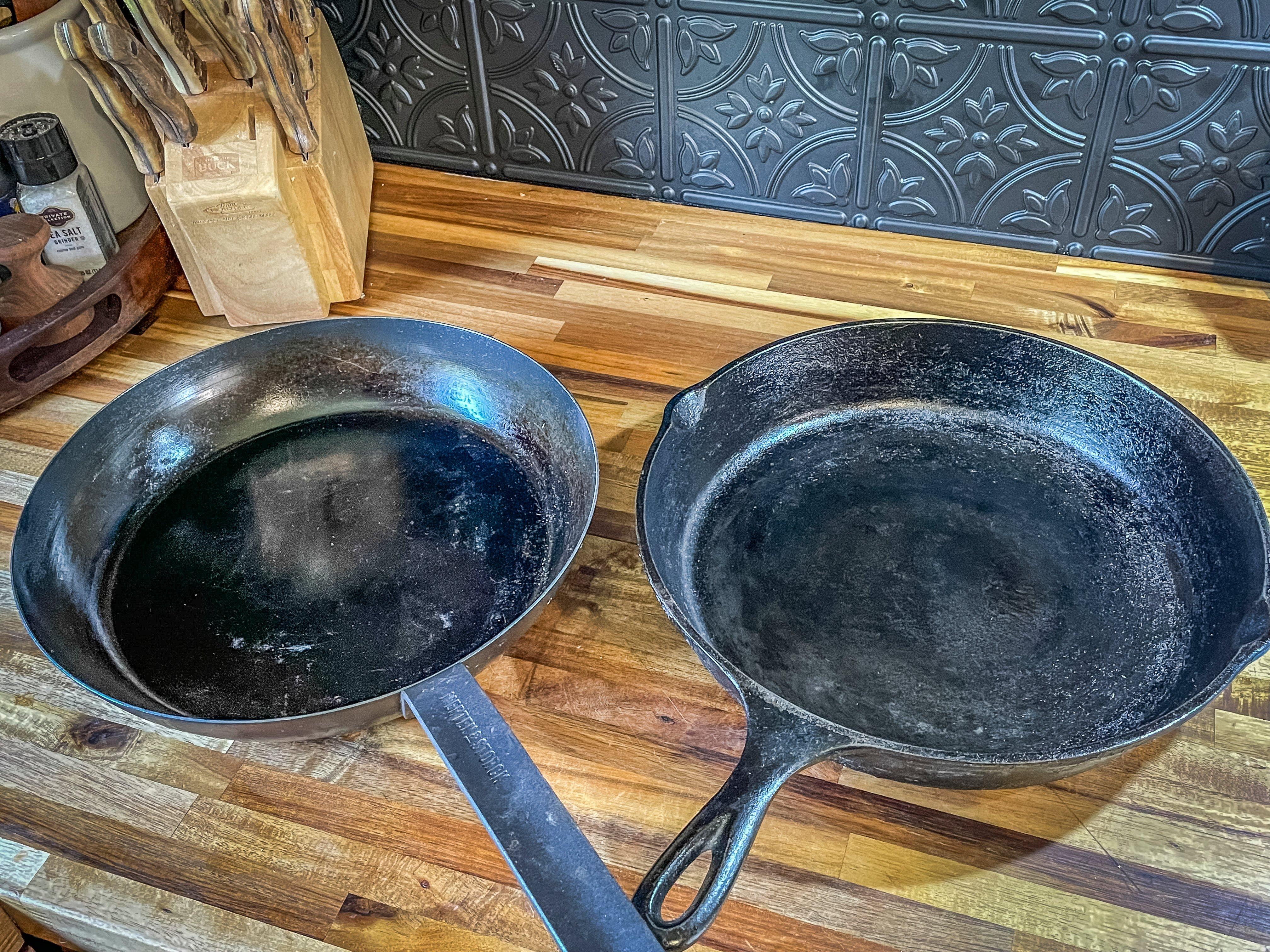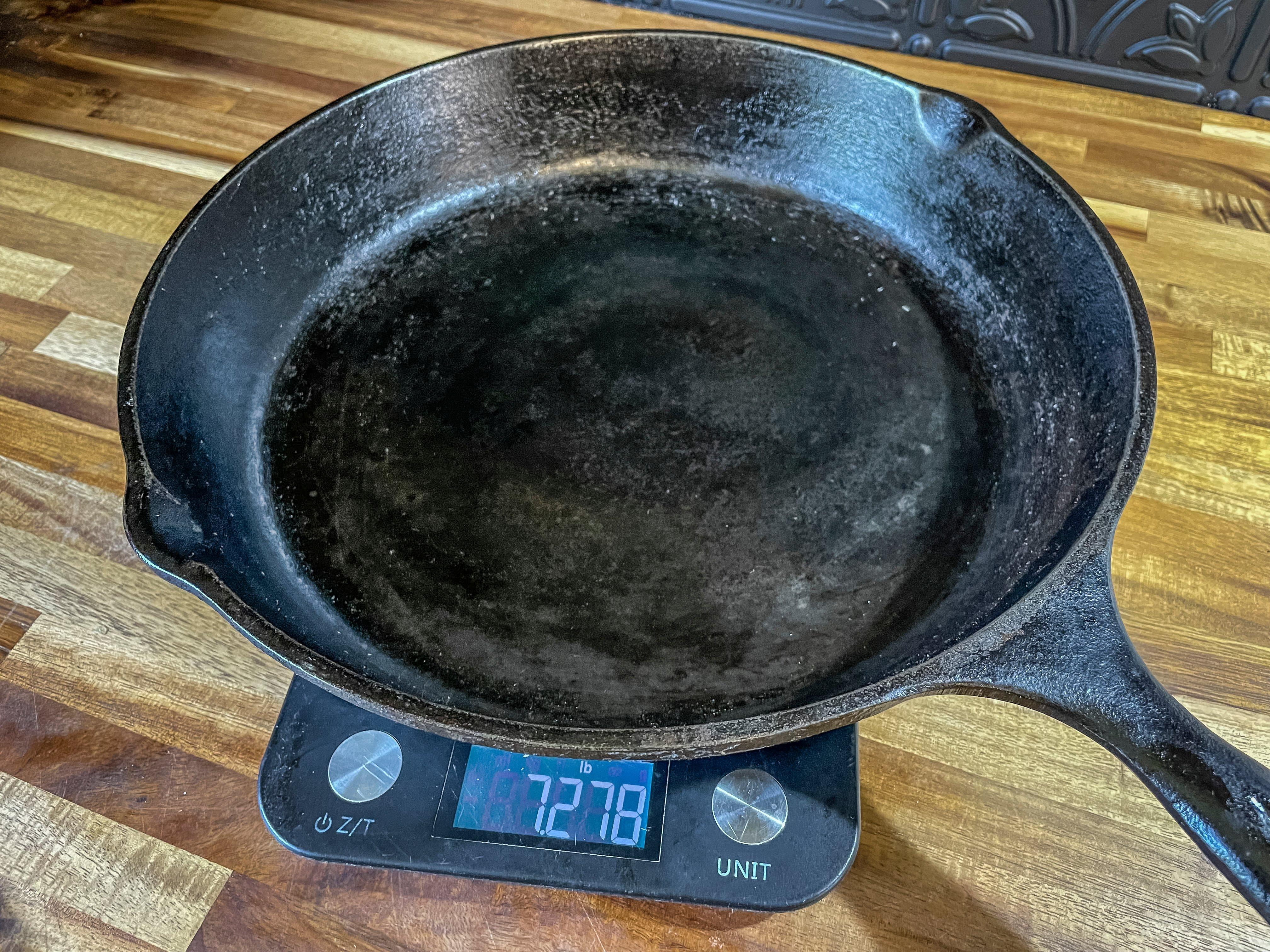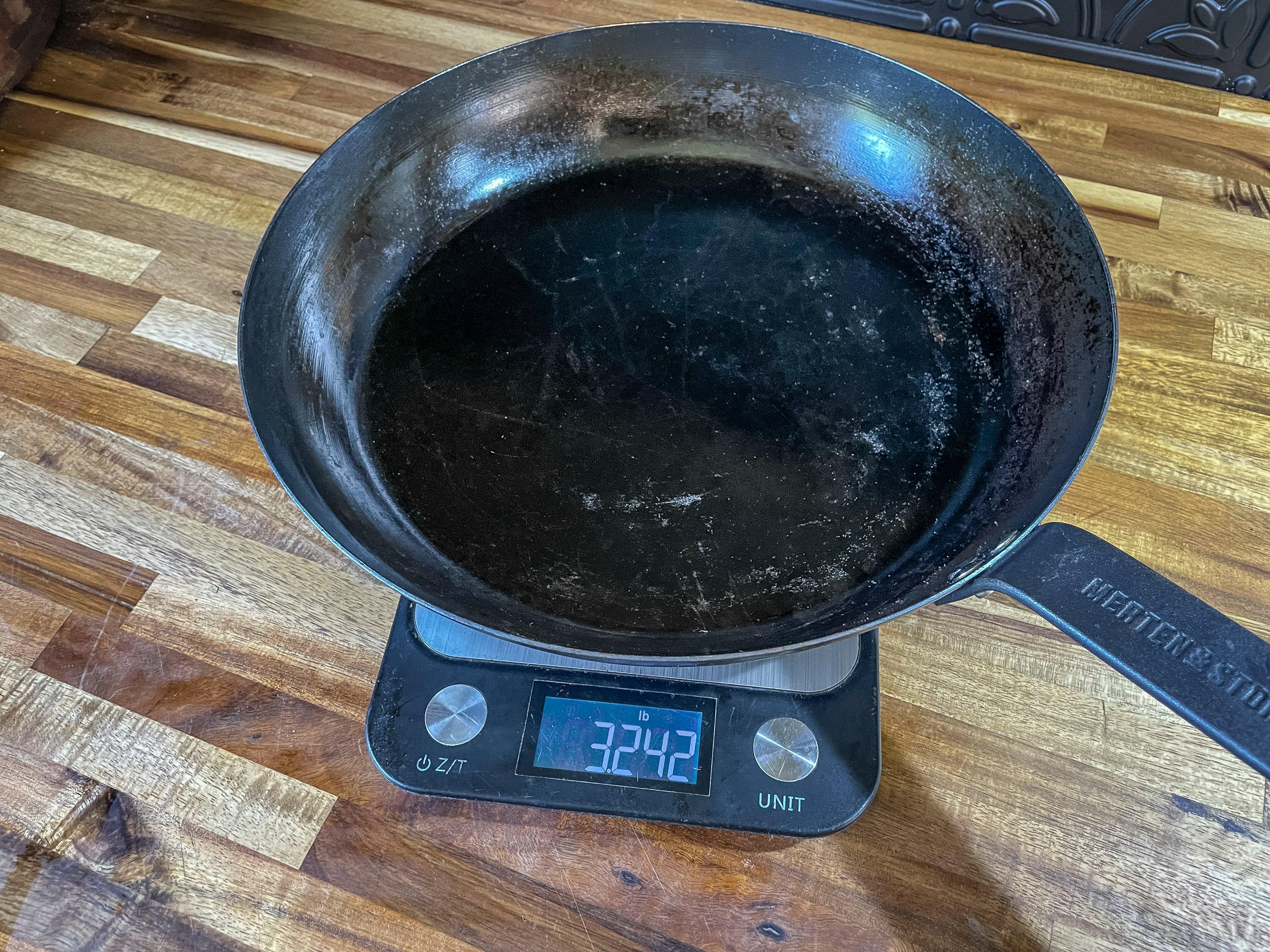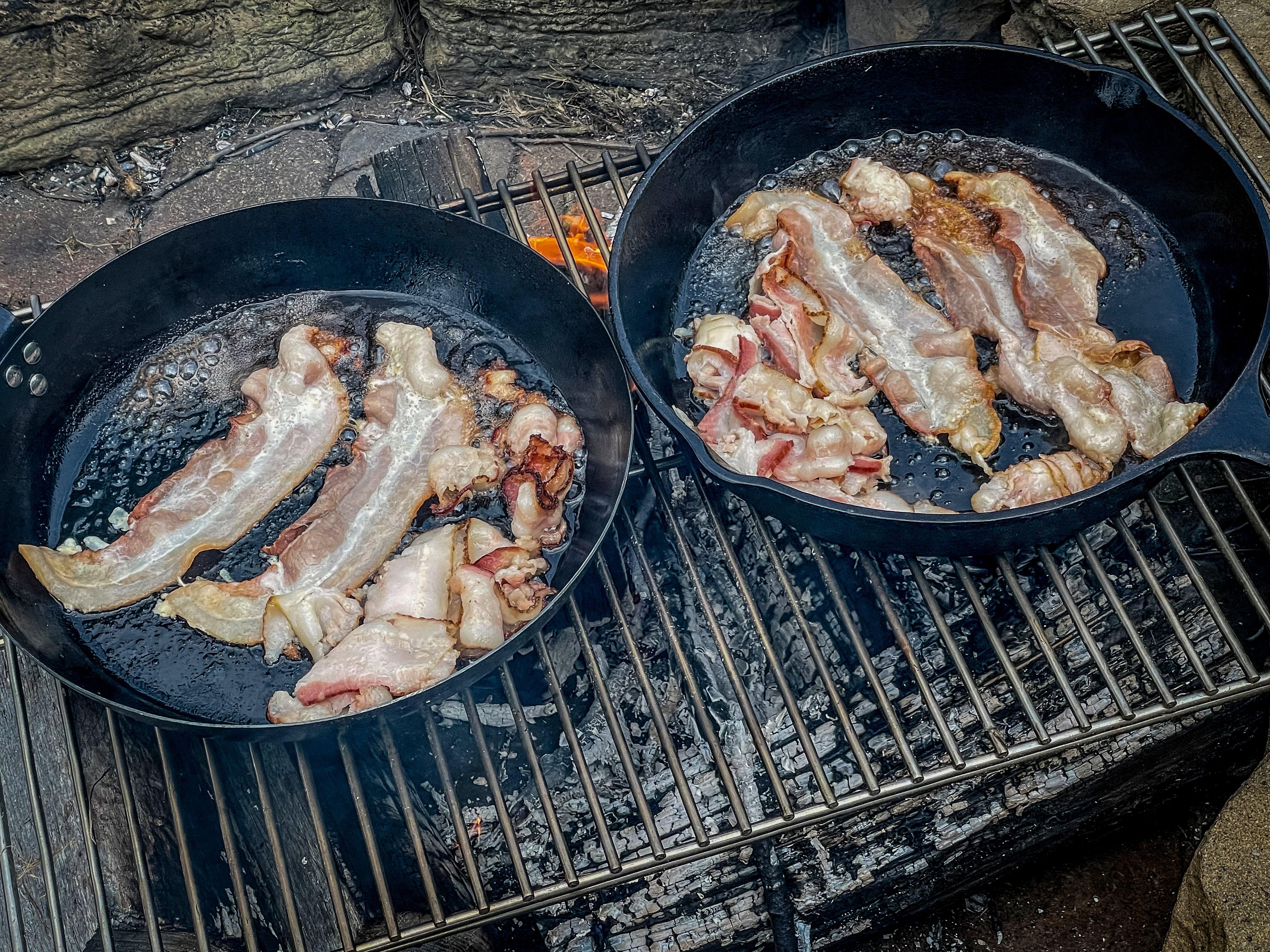What’s the difference, how are they similar, and which one is best for your camp kitchen?
Mention a camp skillet to most folks, and the traditional heavy cast-iron model is going to be what comes to mind. Good reason. Cast iron holds heat well, it’s durable, and, with the right seasoning and care, it can be as slick as a catfish belly.
But cast iron isn’t the only good option for your next camp meal prep. While they aren’t new, carbon-steel skillets have seen a boom in popularity over the past few years. You can find carbon-steel pans from just about every manufacturer these days, including Lodge.

While carbon and cast-iron pans share many similarities, there are some differences to consider when choosing your camp cookware.
Cast iron and carbon steel share many similarities. Both are a mixture of iron and carbon, although surprisingly based on the name, cast iron contains the higher concentration of carbon of the two. Cast iron contains anywhere from 2% to 4% carbon. The extra carbon makes the metal more brittle, so it has to be poured thicker to be durable. Carbon steel, on the other hand, has around 2% carbon, making it smoother, harder, and tougher than cast iron on an equal thickness basis.
What does that all mean? Carbon-steel skillets can be much thinner than cast iron, and thinner equals lighter weight when it comes to metal. For the 12-inch skillets in this test, the carbon came in at just under half the weight of the cast iron.

This 12-inch Lodge cast-iron skillet tipped the scales at over 7 pounds, definitely a factor if you are hiking to your camping spot.

The 12-inch carbon-steel skillet weighs less than half as much as the similar-sized cast iron.
So how are the two styles similar? Both cast iron and carbon steel need to be seasoned to prevent rust and provide a nonstick cooking surface. Both need to be dried before storing to maintain seasoning. Either can be used on a campfire, a stovetop, or in the oven. Cast iron and carbon steel both react poorly with highly acidic foods or wine.

Both skillet styles need to be seasoned before use.
Which is better? Here’s a list of pros and cons for each:
Cast Iron
Pros:
Nearly nonstick with the proper seasoning.
Holds heat well for extended cooking times.
Tough. You aren’t going to chip or bend cast iron in normal everyday use.
Inexpensive.
Cons:
Heavy weight, especially when traveling on foot or by horseback.
Slow to heat. Their increased mass requires more time on the fire to heat evenly.
Will shatter if dropped or exposed to extreme temperature changes.
Prone to rusting if not cared for properly.
Carbon Steel
Pros:
Much lighter in weight than a similar-sized cast-iron pan.
Can also be made nonstick with proper seasoning.
Much more reactive to temperature changes. Carbon-steel pans heat and cool faster, making it easier to maintain a steady temperature on an open fire.
Smooth surface is easy to clean.
Not as likely to shatter if dropped.
Cons:
Unlike modern cast iron, most carbon-steel pans don’t come pre-seasoned from the manufacturer, so they need to be seasoned before use.
Carbon-steel pans are often more expensive than a similar-sized cast-iron version.
Not as many standard sizes, making it tough to find lids that fit.
Cools down faster than cast iron, important when finishing up a cook over a small fire or other heat source.
Seasoning and Maintenance
Despite their differences, both skillet styles benefit from the same seasoning and maintenance. Seasoning is best done at home in the oven, where you have good temperature control. Start by heating the skillet slightly on the stovetop. When the metal is completely dry and warm to the touch, use a clean cloth to wipe on a thin layer of cooking oil like vegetable, canola, sunflower, or grapeseed, or a similar amount of a product like Lodge Seasoning Spray, BuzzyWaxx, or Crisbee Cast Iron Seasoning. Cover all surfaces of the skillet, but keep it thin. You don’t want any puddles of oil on the surface.
Once your pans are coated, place them, upside down, on a sheet pan. Turning them over prevents any oil from pooling on the cooking surface, which will leave a sticky spot on the pan. Place the pan in a preheated oven at 450 degrees. Bake for one hour, turn off the heat, and leave the pan inside until the oven cools. Repeat if necessary to form a nonstick layer.
Once your skillets are seasoned, maintain them by cleaning well after each use, then drying completely before storing. Either style of skillet, when put away wet, will rust. If that happens, simply scrub out the pan to remove the rust, using steel wool if needed, then repeat the seasoning process.
***Don’t Miss: TIPS FOR CAST-IRON COOKING AND CARE
The Verdict
So which is better? You won’t go wrong with either style in your camp kitchen. If weight is a factor, go with carbon steel.

Both skillets will do an excellent job at camp, so the decision comes down to weight, toughness, and personal choice.
If you prefer a traditional style, stick with cast iron. If you tend to be rough with your kitchen equipment when loading and unloading, carbon steel might be a bit less prone to damage. If you cook recipes that require tight-fitting lids, cast iron might be easier to find. Both will do everything a camp skillet should, from frying breakfast bacon and eggs to searing a steak.










